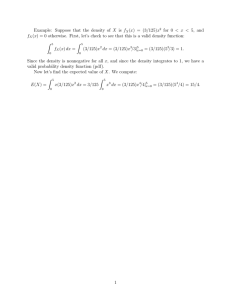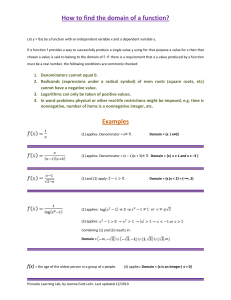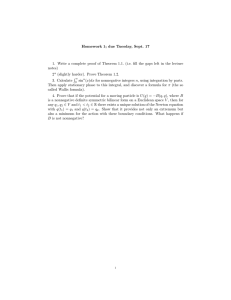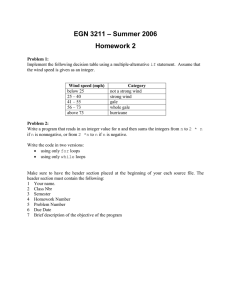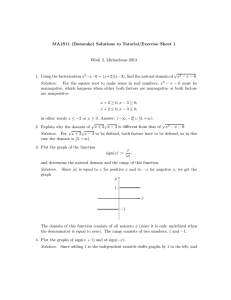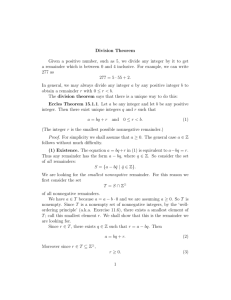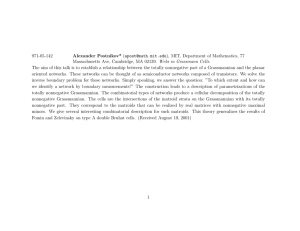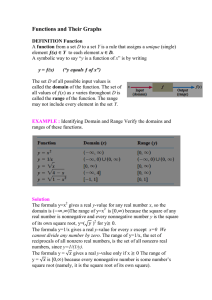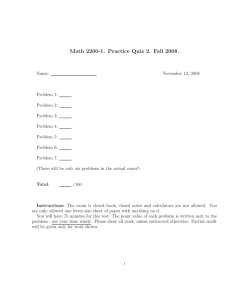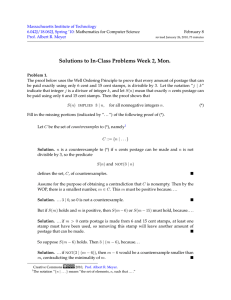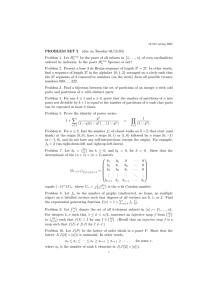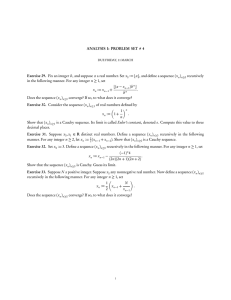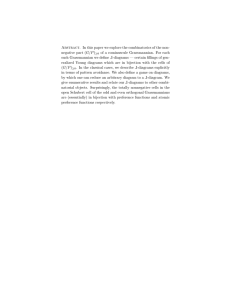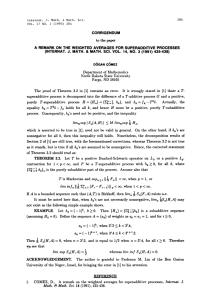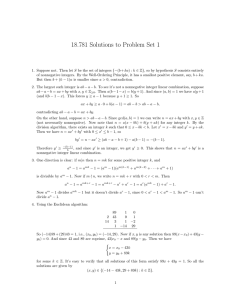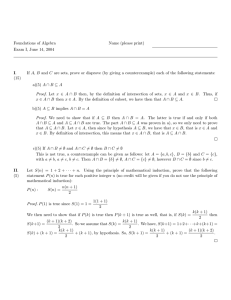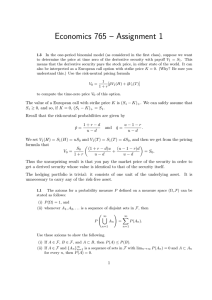1 AMM problem 11651
advertisement
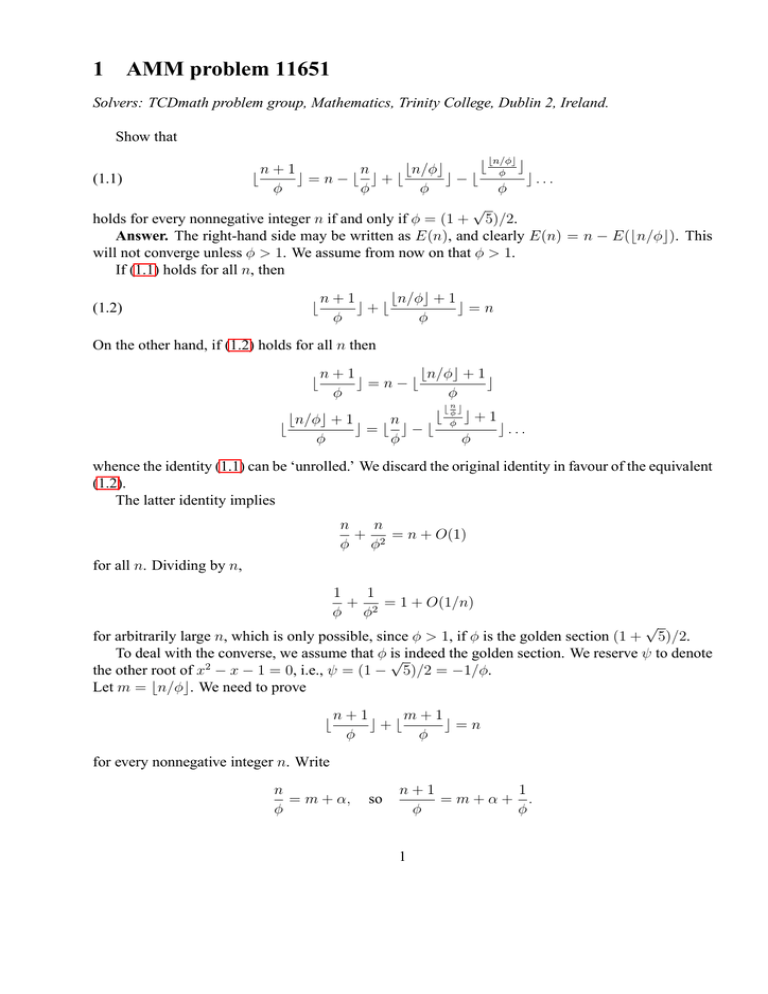
1 AMM problem 11651 Solvers: TCDmath problem group, Mathematics, Trinity College, Dublin 2, Ireland. Show that ⌊n/φ⌋ ⌊ φ ⌋ n+1 n ⌊n/φ⌋ (1.1) ⌊ ⌋=n−⌊ ⌋+⌊ ⌋−⌊ ⌋... φ φ φ φ √ holds for every nonnegative integer n if and only if φ = (1 + 5)/2. Answer. The right-hand side may be written as E(n), and clearly E(n) = n − E(⌊n/φ⌋). This will not converge unless φ > 1. We assume from now on that φ > 1. If (1.1) holds for all n, then (1.2) ⌊ ⌊n/φ⌋ + 1 n+1 ⌋+⌊ ⌋=n φ φ On the other hand, if (1.2) holds for all n then ⌊ n+1 ⌊n/φ⌋ + 1 ⌋=n−⌊ ⌋ φ φ ⌊ n ⌊n/φ⌋ + 1 ⌋=⌊ ⌋−⌊ ⌊ φ φ ⌋ ⌊n φ φ ⌋+1 φ ⌋... whence the identity (1.1) can be ‘unrolled.’ We discard the original identity in favour of the equivalent (1.2). The latter identity implies n n + 2 = n + O(1) φ φ for all n. Dividing by n, 1 1 + 2 = 1 + O(1/n) φ φ √ for arbitrarily large n, which is only possible, since φ > 1, if φ is the golden section (1 + 5)/2. To deal with the converse, we assume that φ √ is indeed the golden section. We reserve ψ to denote the other root of x2 − x − 1 = 0, i.e., ψ = (1 − 5)/2 = −1/φ. Let m = ⌊n/φ⌋. We need to prove ⌊ n+1 m+1 ⌋+⌊ ⌋=n φ φ for every nonnegative integer n. Write n = m + α, φ so n+1 1 =m+α+ . φ φ 1 Since n/φ + n/φ2 = n, m+α+ n =n φ2 Case (i): α + 1/φ < 1, in which case m = ⌊(n + 1)/φ⌋, and it is enough to show that n−m=α+ or α+ m+1 n =⌊ ⌋. 2 φ φ m+1 n n < < α + 2 + 1. 2 φ φ φ Since m/φ < n/φ2 , the second inequality is obvious. The first is equivalent to n n/φ + 1 − α +α< 2 φ φ or α< 1−α φ But α < 1 − 1/φ = 1/φ2 and 1 − α > 1 − 1/φ2 = 1/φ, so this is correct. Case (ii): α + 1/φ > 1. Then ⌊(n + 1)/φ⌋ = m + 1, and we need to show m+1+⌊ m+1 n n ⌋ − − 2 = 0. φ φ φ So we need to show that n/φ − α + 1 n n n −α+1+ − − 2 φ φ φ φ 1−α = (1 − α)(1 + 1/φ) = (1 − α)φ =1−α+ φ is between 0 and 1. It is positive, and α > 1−1/φ = 1/φ2 , so 1−α < 1−φ2 = 1/φ, as required. 2
